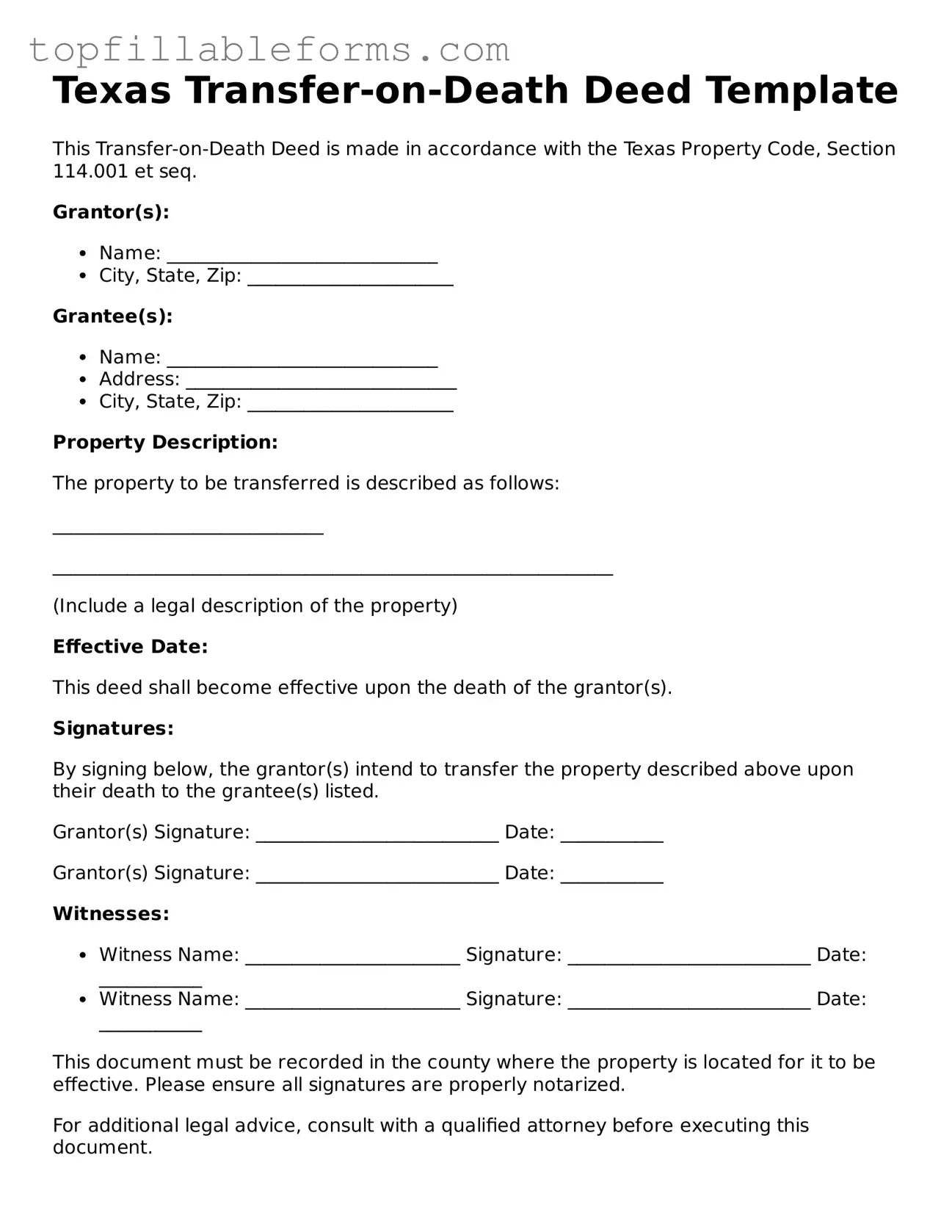Texas Transfer-on-Death Deed Template
This Transfer-on-Death Deed is made in accordance with the Texas Property Code, Section 114.001 et seq.
Grantor(s):
- Name: _____________________________
- City, State, Zip: ______________________
Grantee(s):
- Name: _____________________________
- Address: _____________________________
- City, State, Zip: ______________________
Property Description:
The property to be transferred is described as follows:
_____________________________
____________________________________________________________
(Include a legal description of the property)
Effective Date:
This deed shall become effective upon the death of the grantor(s).
Signatures:
By signing below, the grantor(s) intend to transfer the property described above upon their death to the grantee(s) listed.
Grantor(s) Signature: __________________________ Date: ___________
Grantor(s) Signature: __________________________ Date: ___________
Witnesses:
- Witness Name: _______________________ Signature: __________________________ Date: ___________
- Witness Name: _______________________ Signature: __________________________ Date: ___________
This document must be recorded in the county where the property is located for it to be effective. Please ensure all signatures are properly notarized.
For additional legal advice, consult with a qualified attorney before executing this document.
